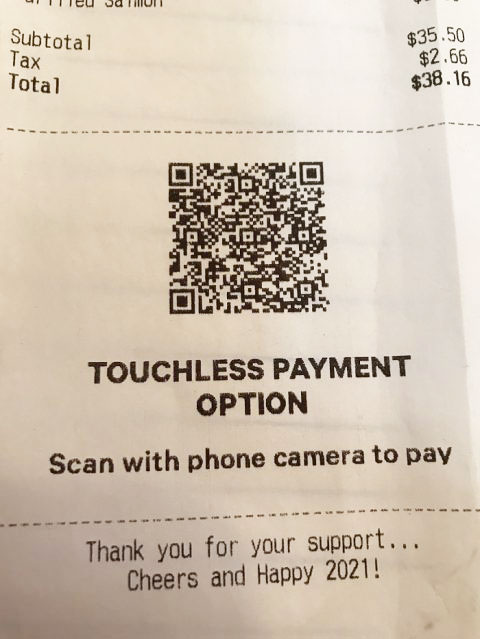2021 Trends: QR Codes (Again)
About seven years ago, QR codes seemed like the newest and coolest technology. Take a picture and your phone would take you to a website (which was kind of boring) or a video (better). DMOs (Destination Marketing Organizations) thought this would be great to use since more people were using smartphones.
Well, about six years ago, the QR code was deemed old school and not that important for tourism.
Sometimes the technology didn't work well, the link was broken, or the code went to outdated information, so destinations stopped using them.
And then COVID.
Do you remember way back in March 2020 when we were told this virus was spread on contact? Were you one of the people that left packages outdoors and wiped down your groceries? At that time, it was all about minimizing contact. We have since learned that this virus is caught via airborne transmission, but people are still wary about touching objects outside their homes.
QR codes are a perfect solution.
For those of you not familiar with QR codes, you just point the camera on your smartphone at the shape and it will take you to a document, video, or website. When they first became popular, you needed to hire someone with graphic design skills or a techy background to create one for you. Not anymore! There are free QR code generator websites. If you can cut and paste, you can create a QR code. Click here for the free QR code generator I use.
How Can Tourism Professionals Use QR Codes Today?
Our industry can often be slow to adopt new technology, but now is the time to embrace new ideas. Here are how some businesses are using QR codes. What methods might work for your business?
QR codes can share information that you otherwise would have had to print.
I have been to a few restaurants that have QR codes posted at the hostess stand. Scan the code to upload the menu to your phone. You don't have to touch a menu and the business can cut down on disinfecting menus or printing up new ones for every customer.
As a way to share additional information.
Many museums and attractions are adding QR codes to their display content. What a great way to share a behind the scenes video or a link to information that is in other languages, appropriate for children, or part of a scavenger hunt.
It's an easy way to update changing rules and regulations, operating hours, etc.
If we have learned nothing else in 2020, it is that we have to be nimble. Changing government regulations may cause changes to admission, hours of operation, and masking rules. Having a QR code available to scan on your brochure or print information can lead to a page on your website that can be updated quickly. No need to reprint when rules change.
As a payment method. Check out this receipt:
 Photo courtesy of Sally Davis Berry.
Photo courtesy of Sally Davis Berry.
I recently had lunch and when the check was presented, there was a QR code on the bottom. I could scan the QR code and pay from my phone. Brilliant!
Online ticketing.
Attractions ticketing platforms like Viator and Rezdy are using QR codes for ticketing. A local winery developed a drive-through light show (with a stop at the tasting room) and our ticket was a QR code scanned at the entrance. Easy!
As a way to appeal to younger demographics.
QR codes are used more frequently by great travel demographics: 34 to 44-year-olds are leading the pack at 27%, followed closely by those 44 to 54 at 21% and 24 to 34 at 20%. Read more below on marketing with QR codes.
Additional Resources on QR codes:
Written by Sally Davis Berry.
This article was republished with permission and originally appeared at Sally Davis Berry.



